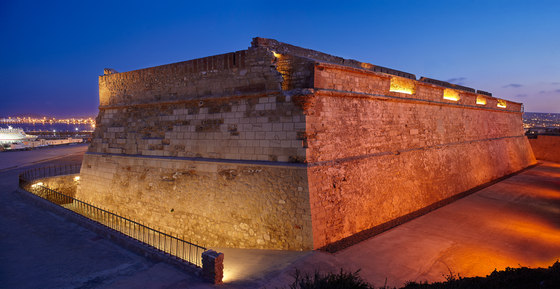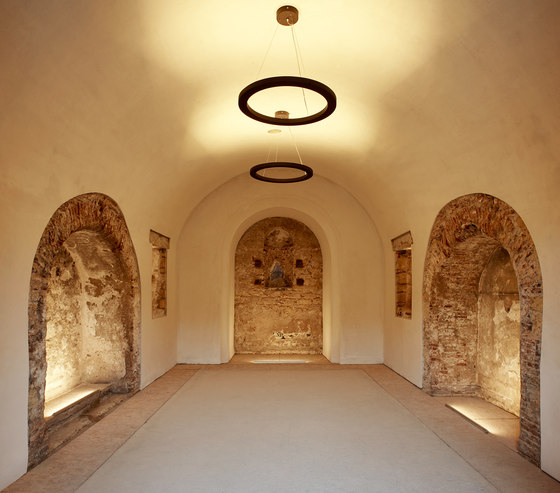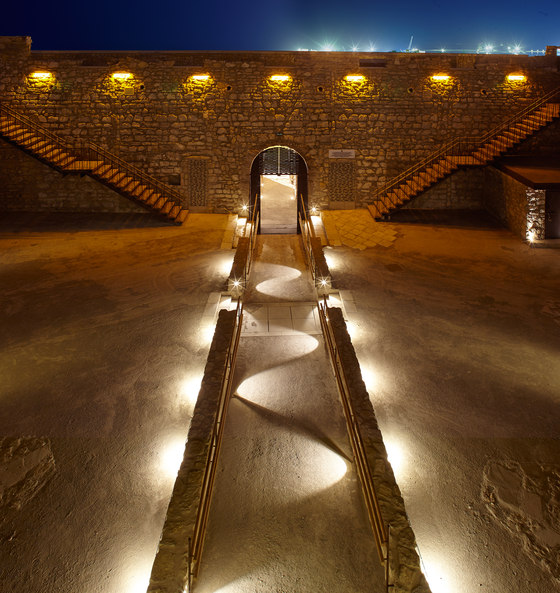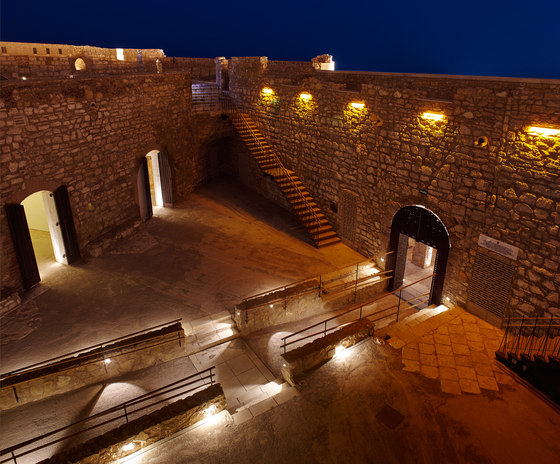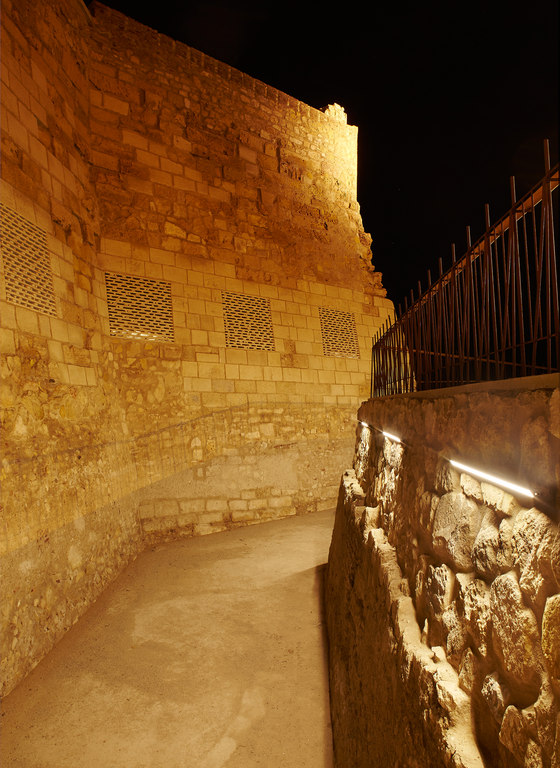The fortress was built in 1736 by the military engineer Juan Martín Zermeño (later he restored the Montjüic Castle in Barcelona). This bastion in triangle-shape was, in the beginning, a place where you cannot enter, later used as a prison (the place you cannot escape), and turned into a ruin for the lack of use. Now, it is a public space open to the visitors and shapes the identity of Melilla, in the North of Africa.
The lighting design of the project is the result of the careful application of LED technologies in terms of integration in architecture, in the sense that the luminaires have disappeared or become transparent not to interfere visually in the contemplation of the environment. We can find a number of imaginative solutions about linear elements integration, all of them equipped with high quality LED sources. Sometimes they fly under the vaults drawing swift lines that uplight the ceilings, or create a play of dramatic backlights in the stone blinds when they are observed from outside the faces of the fortress.
All the perimeter is lit from the moats, washing the walls with a play of colour temperatures, recreating the fire glows, and that fade smoothly up the vertical plane. A uniform wash would have created a flat and boring image of the building, but in this fashion, the result is eloquent without whimsicality. The light variations in colour temperature achieve a pictorial effect, and the accents punctuate the reading of the whole façade. On the sidewalls, the battlements are shaped vertically by light, giving order and rhythm to the image of the fortress, and the volume is then outlined clearly.
This project offered many good opportunities to give bright and smart solutions, and the results talk themselves about the synchronicity between architect, engineering and lighting design. The access ramp, built to assure mobility has been turned into a lighting integration element that gives the ambiance to the interior of the patio. This kind of applications allows to respect faithfully the image of the building during the day and sets interesting nocturnal displays at nights. The light sources, hidden from direct vision, draw smoothly curves of light and shadow. The ventilation chimes were discovered during the restoration and now they work as lanterns, lit from the interior, a true eye candy when visiting the terraces of the walls. The result is full of this kind of subtle details, fruit of the application of technique and imagination.
The architects, the engineer and the lighting designer have developed an autonomous battery-driven luminaire with the shape of a primitive candlelight. Fitted with three LED of different tones of amber and warm colour temperatures, and controlled by an implementation of the ZigBee protocol, integrated with the rest of the installation, controlled by a KNX system, through a Printed Circuit Board bridge specially designed for this application. With this development, the oil candle has been transported to the 21st century, that of the hyper-connectivity and the Internet of things.
The lighting project of Victoria Grande Fortress in Melilla, North Africa, edited by Francisco Javier Gorriz Sanchez from the Spanish design studio DCI, stood out among the 140 representatives from academia, business and professional world, winning the first prize in the Lighting Designer category at the third edition of Codega Awards, the recognition of the excellences of Lighting Design assigned to the best LED Lighting Design solutions, within the splendid location of Ca’ Zen in Venice.
The project’s success is the result of a careful application of LED technologies in a place with high historical value, using an artistic interpretation, performed with only light effects.
The perimeter of the historic fort is illuminated by colorful warm tones, designed to enhance the surface and create the atmosphere within the walls.
The Xenia by Linea Light Group have been used to integrate perfectly to the architecture and do not interfere with the view of the space.
The three different LED colors have also to recreate the effect of the fire that lights up, making the Victoria Grande Fortress a highly evocative place.
This approach emphasizes a note of strong boost to innovation and reinterpretation of a cultural, declaring a courageous design and a domain of “light material”.
Ciudad Autónoma de Melilla
Chacel 8 Architecture, Spain
Lighting Design: Diseño y Consultoría de Iluminación, Spain
Main Lighting Suppliers: LED Linear, Linealight

